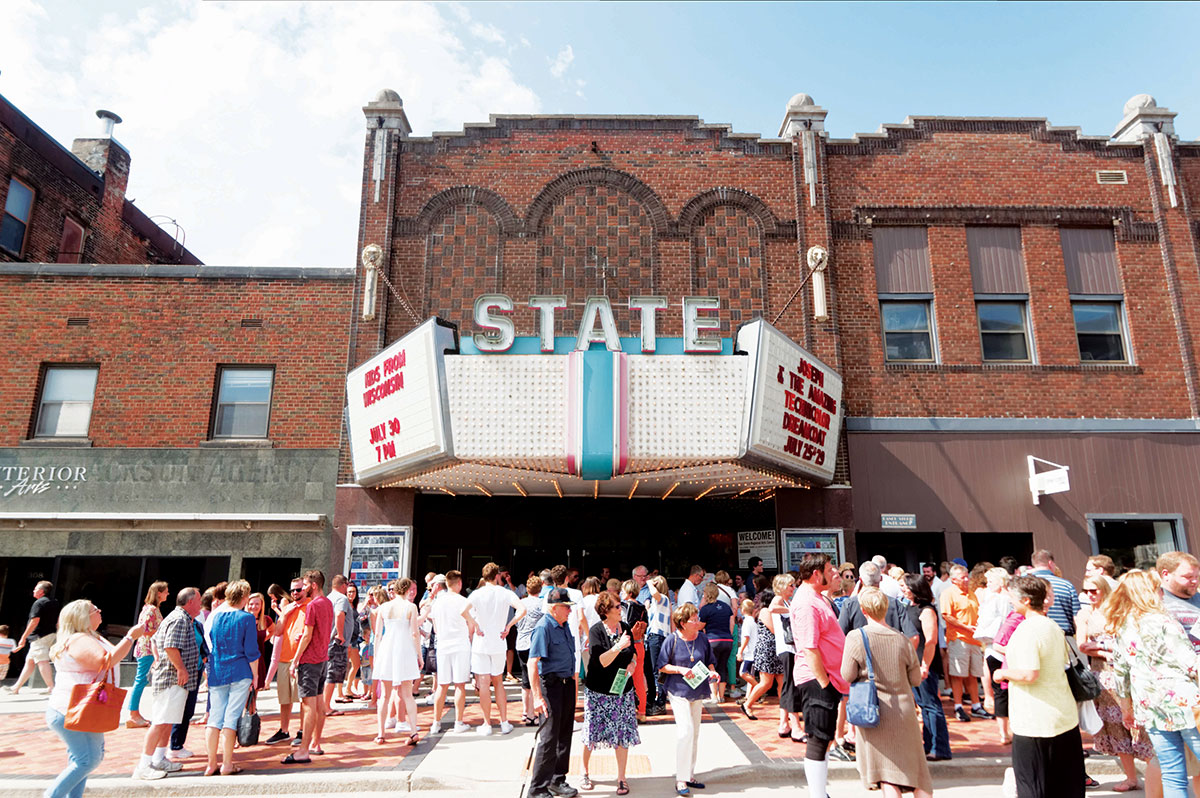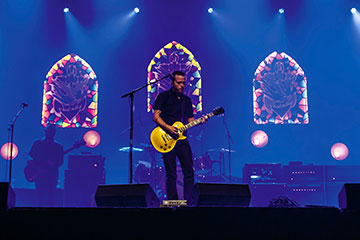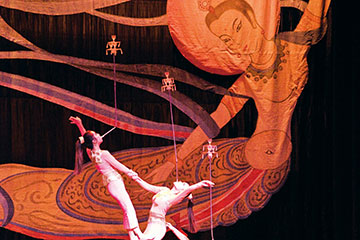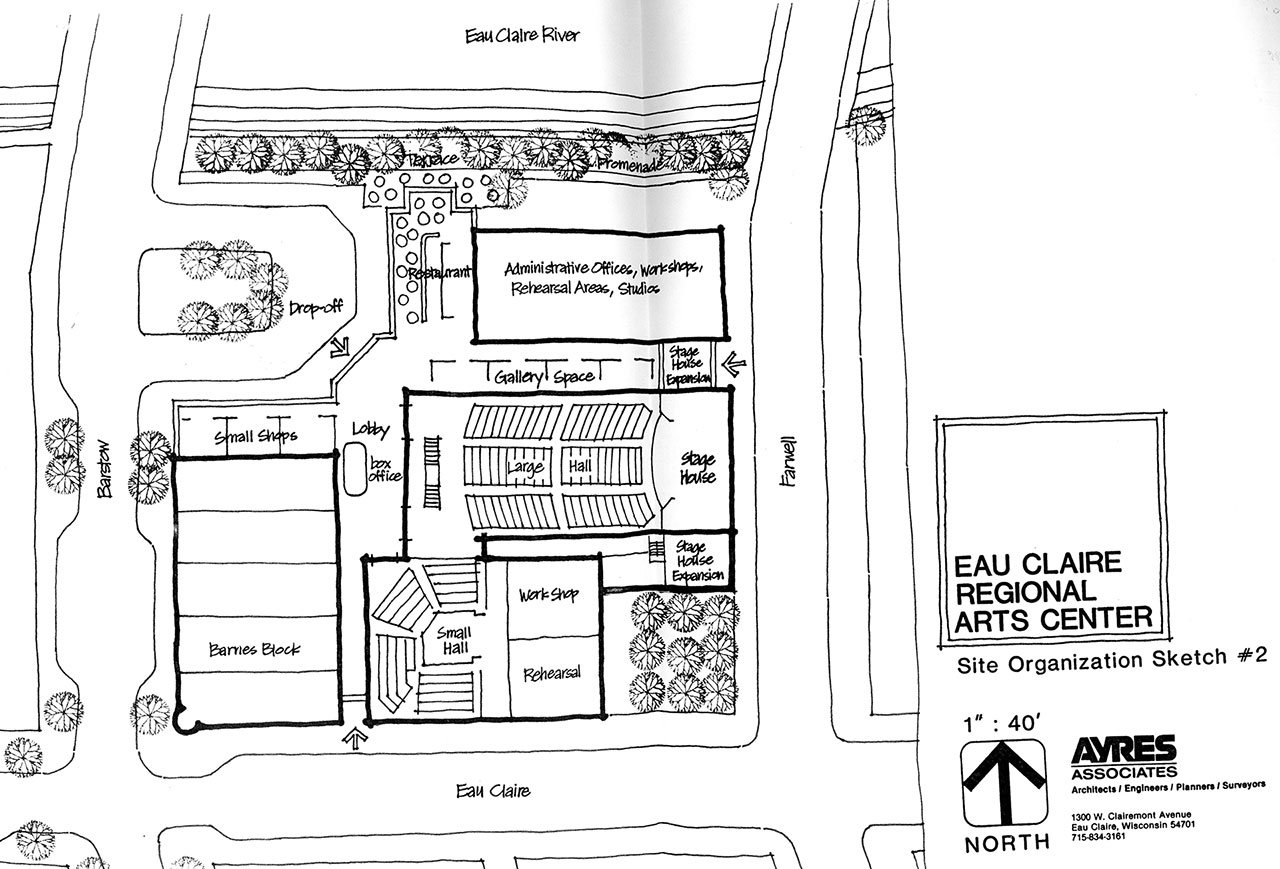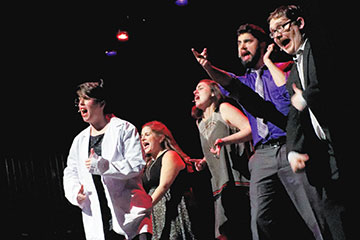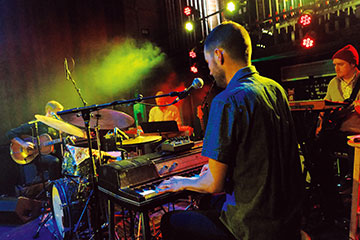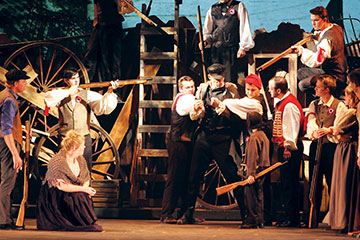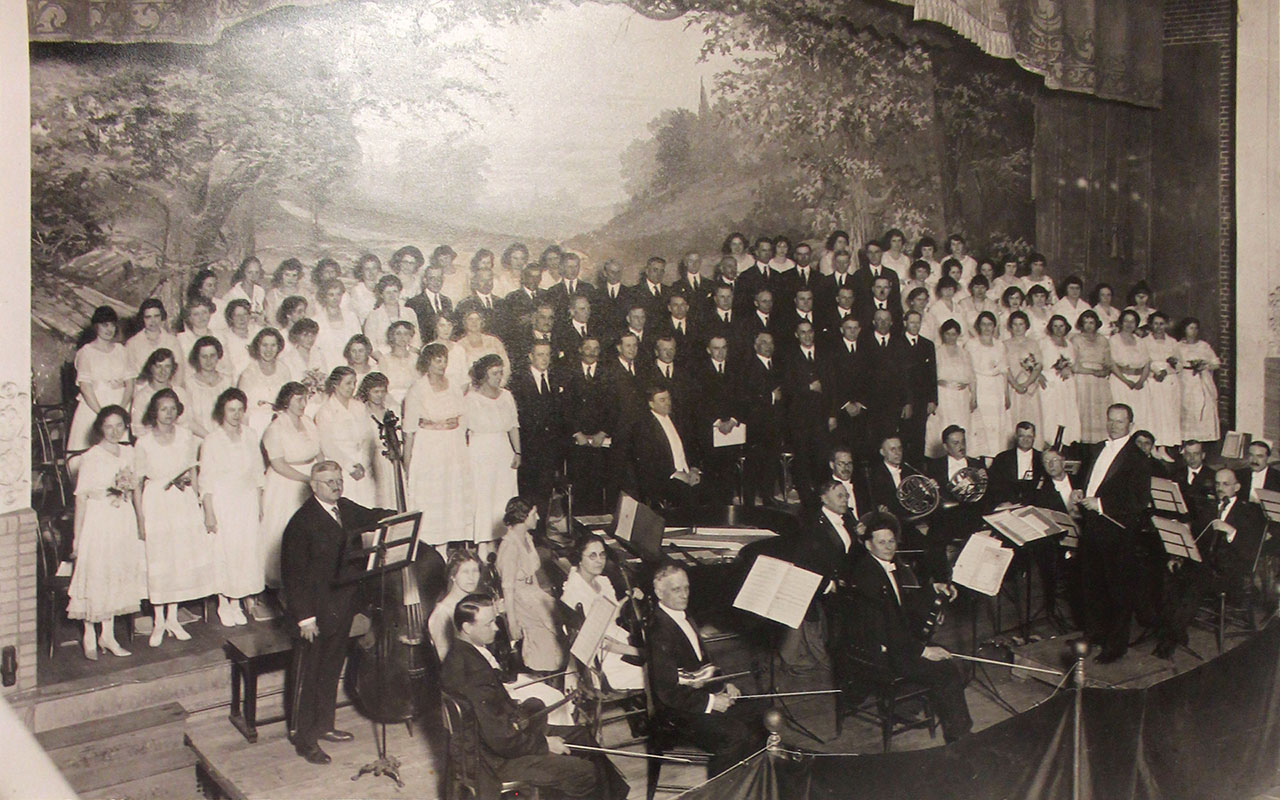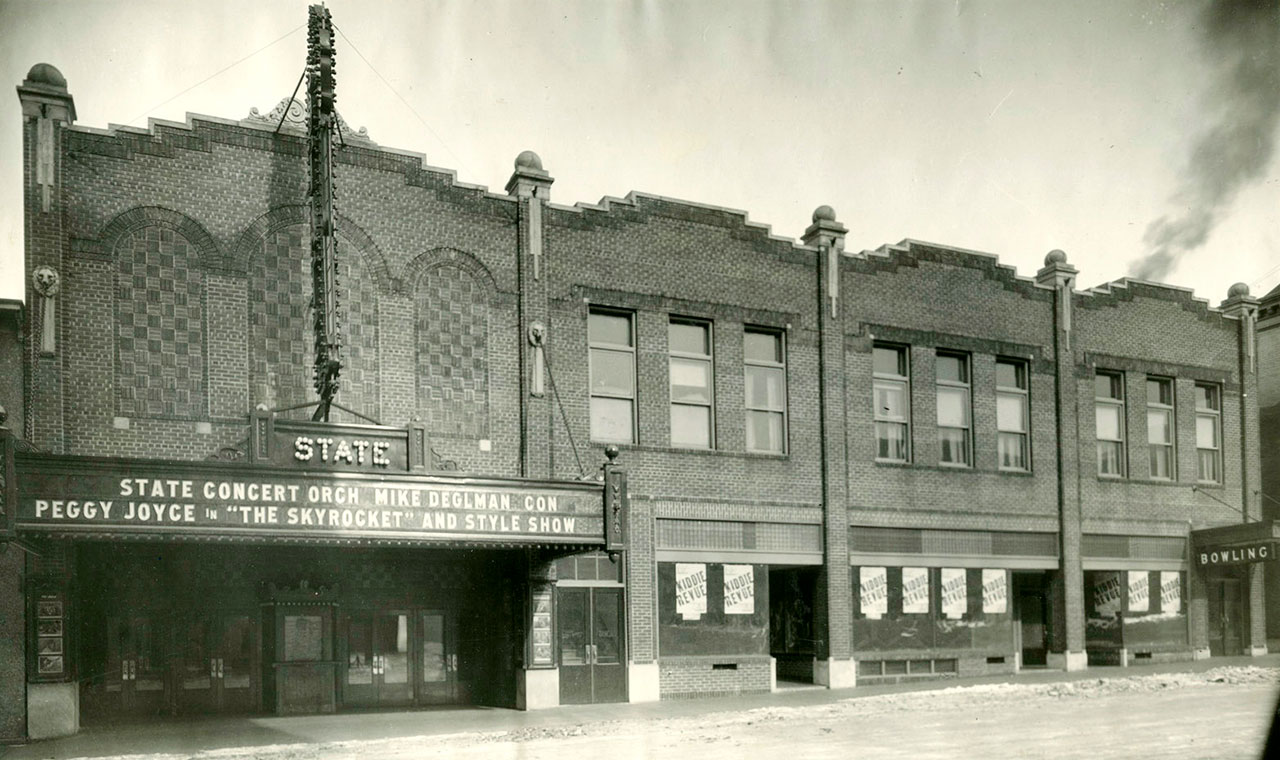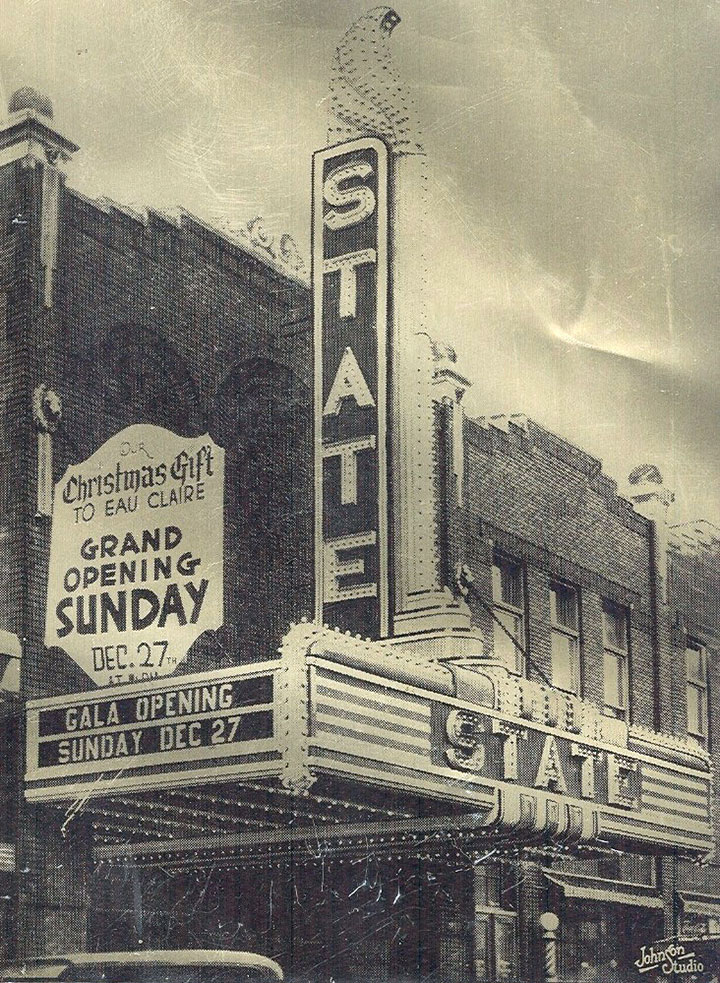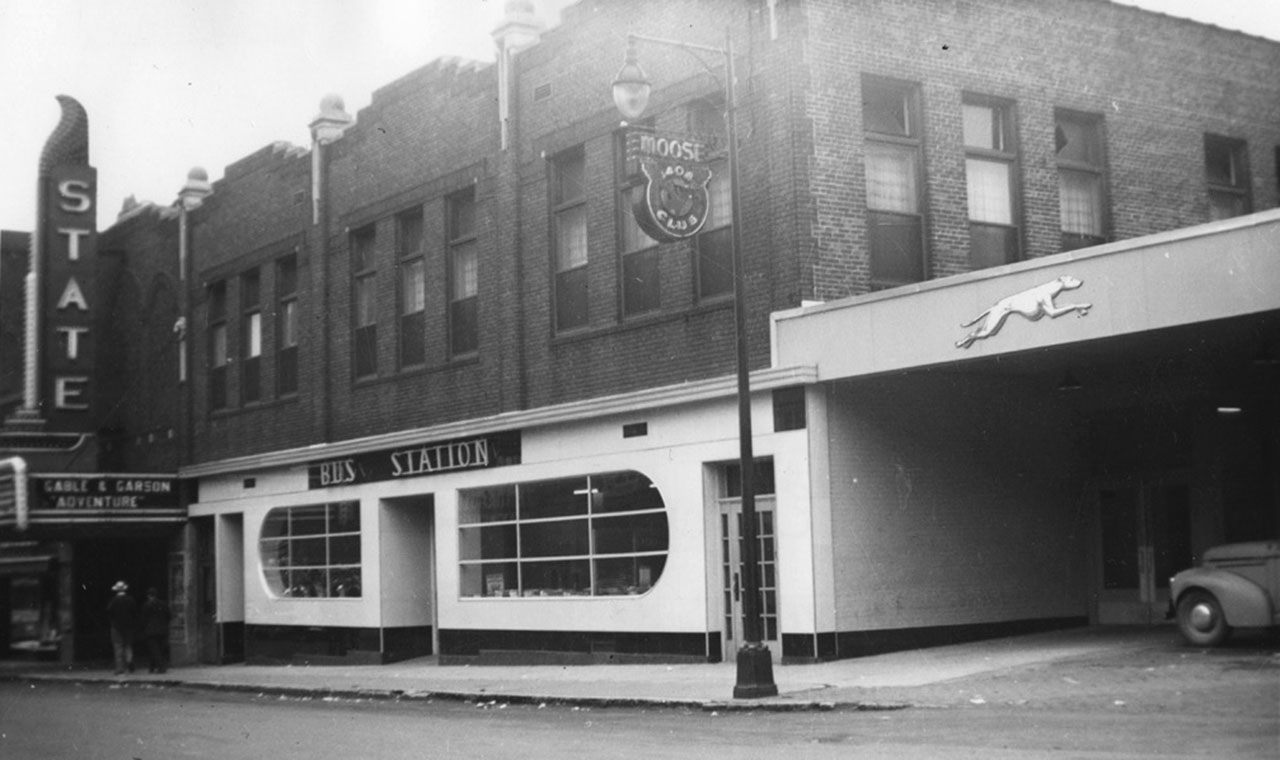IMPOSSIBLE THINGS ARE HAPPENING EVERY DAY
Finally, the Valley’s disparate artistic community had a home.
“Up until that point we were scattered all over the place,” Carr, co-founder of the CVTG, said of the area’s artists.
The State Theatre gave all these creative people and their supporters a common project.
“It was this old theater building with rotten curtains and warped floors,” he said with enthusiastic nostalgia.
Carr fondly recalled an army of volunteers working together on their hands and knees to strip and re-cement the theater’s floor.
Because the theater hadn’t been built for modern, large-scale performances, alterations had to be made, including the addition of trapdoors and theatrical lighting.
Artist Gene Leisz spent hours painstakingly restoring the intricately painted ceiling of the theater’s lobby.
Schoolchildren brought in their pennies to help fund the project, and local businesses, foundations, and individuals pitched in as well.
It was to be the first part of a three-phase fundraising effort, but the final two phases were never completed.
Still, the State began to flourish.
Over 30 years, the theater hosted hundreds of touring performers – from chart-topping musicians to nostalgic tribute acts to ballets to magic shows.
Regular visitors included the likes of Lorie Line and Gaelic Storm, and legends such as George Carlin, Joan Baez, and Steve Martin wowed audiences.

The were scores of community productions as well, largely staged by the Eau Claire Children’s Theatre and the Chippewa Valley Theatre Guild.
“It was newly remodeled – to a point,” longtime CVTG performer Katie Schumacher recalls of the guild’s first performance in the State: Rodgers and Hammerstein’s Cinderella, which opened April 28 1988.
The floor hadn’t yet been finished backstage and an oil tank occupied one of the dressing rooms, but the theater was still an exciting change for the troupe, which had previously performed at North High School.
The show – and the venue – earned rave reviews.
“The feeling in the air was of a city re-energized, a once-slumbering creature stepping out of a cave after years of hibernation,” reporter Chris DuPre wrote in the Leader-Telegram.
While a subsequent addition to the State added badly needed offstage space, in large part the State Theatre of today is the same as it was in 1988 – and in 1926.
“It’s been neat to see her in her glory,” Schumacher said.
“I would have loved to see her when she was first built and to see that vaudeville.”
After being part of 33 productions at the State, six of which she directed, Schumacher has a lifetime of affectionate memories of the theater.
She still laughs over backstage pranks and comic onstage mishaps, such as the time a crew member raising the curtain got his foot caught in the rope and began lifting himself off the ground.
And there were the emotional times – the transcendent moments when the magic of theater connected performers and audience members.
“I’ve laughed there, I’ve cried there,” Schumacher said.
“We’ve hugged each other.
Jesus Christ Superstar, when we did it the first time, you heard everybody sobbing in the background because we were so moved.”
Eau Claire musician Adrian Klenz, who estimates he’s performed at the State at least 50 times – most recently as singer and emcee for the Chippewa Valley Jazz Orchestra – said the building’s antiquated condition has been part of its charm.
“People would complain how cramped it was backstage, (but) I loved it,” he said.
“Being an artist of any kind is rarely easy.
The beauty of art is you make it work.
You have to improvise, and with the State, you had to be prepared.
The roof could leak during a big storm and flood the orchestra pit, you had to deal with it!”
